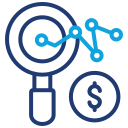
Future Trends in Cloud-based Management Accounting Solutions
Welcome to our home base for forward-thinking finance leaders. Today’s chosen theme: “Future Trends in Cloud-based Management Accounting Solutions.” Explore how AI, real-time analytics, secure ecosystems, sustainability metrics, human-centered collaboration, and extensible platforms will reshape management accounting. Subscribe, comment, and help shape where the discipline goes next.


AI-driven Planning and the Autonomous Finance Close
Management accounting is shifting from static rules to learning models that detect anomalies, infer drivers, and suggest corrective actions. A controller recently shared how an ML outlier flagged a subtle freight leakage before quarter-end. What would you prioritize first—pricing sensitivity, spend anomalies, or demand signals?
AI-driven Planning and the Autonomous Finance Close
Generative assistants draft commentary, reconcile narratives with driver trees, and translate technical analysis into stakeholder-friendly language. They accelerate insights while preserving analyst judgment. Try prompting a model with your top five drivers and compare narratives. Share your best prompts so others can learn.
Real-time Intelligence, Predictive Forecasts, and Scenario Agility
Streaming Data for Always-On Visibility
With event streams from ERP, CRM, and supply platforms, management accounting gains minute-to-minute visibility. You can see margin impacts before they hit the ledger. One FP&A team adjusted discounts midday and saved a week’s worth of erosion. Would your governance allow similar agility?
Predictive Forecasting that Learns and Adapts
Predictive models update rolling forecasts as new signals arrive, weighting recent demand shifts more heavily. Forecast bias gets logged, monitored, and remediated. Start small: forecast a single high-variance SKU. Track accuracy publicly and iterate. Post your baseline accuracy and let’s benchmark progress together.
Scenario Planning in Minutes, Not Days
Cloud models spin alternative scenarios quickly: supplier delay, currency swing, or volume spike. Finance partners can stress-test levers live with operations. Bring your top three what-ifs, run them this week, and share which sensitivity surprised you most. Others may borrow your assumptions and improve.
Trust, Security, and Compliance by Design
Modern cloud accounting solutions adopt identity-centric, least-privilege access with pervasive encryption in transit and at rest. Conditional policies adapt to context, not just roles. Map your most sensitive datasets and verify they inherit the strongest controls. Ask us for a practical checklist if you need one.
API-First Integration for Real Business Speed
API-first platforms let finance plug in operational sources without brittle point-to-point scripts. When a distributor changed EDI partners, one team remapped feeds in hours, not weeks. Share your toughest integration story and the connector or workaround that finally solved it.
Lakehouse Patterns for Finance-Grade Data
A lakehouse combines raw flexibility with governed semantics for finance. Curated dimensions and driver tables serve planning, costing, and profitability analysis. Start by publishing your golden product and customer dimensions. Tell us which definitions are hardest to reconcile across teams.
Sustainability Metrics Inside Management Accounting
Finance teams are allocating sustainability costs alongside traditional drivers, revealing carbon-adjusted margins by product and channel. It changes pricing and portfolio choices. Which ESG allocation method feels most fair in your context? Comment with an approach that resonated with stakeholders.
Human-Centered Collaboration for Distributed Finance Teams
Embedded workflows and threaded comments turn spreadsheets into conversations with clear ownership. A regional planner resolved a standoff in hours using tagged approvals and data-linked notes. What approval state most often stalls your process? Reply with ideas to remove unnecessary waits.
Human-Centered Collaboration for Distributed Finance Teams
Narrative layers bring context to drivers, not just charts. Think side-by-side variance bridges with executive-ready summaries. Try a two-paragraph story that explains the why behind three key variances. Post your draft and we will share feedback from peers who have tried similar approaches.


Low-code, Composability, and Extensible Control
Low-code Apps for Finance, Safely Governed
Citizen developers can build allocation wizards, driver editors, or variance workflows, all under role-based controls. A team built a promotion accrual app in two days. Which small app would remove recurring pain for you? Share your ideas and we will curate templates.
Reusable Components and Marketplace Accelerators
Prebuilt connectors, models, and visual components reduce time to value. Think plug-and-play driver trees or demand signal adapters. Start with one accelerator to learn. Tell us which marketplace item you wish existed; we will feature the best suggestions in our next update.
Guardrails, Versioning, and Change Management
Extensibility requires discipline: sandboxing, peer reviews, version control, and automated tests for models and scripts. Treat finance logic like product code. What governance ritual improved your release quality most? Comment to help others adopt the same practice effectively.
Join our mailing list
